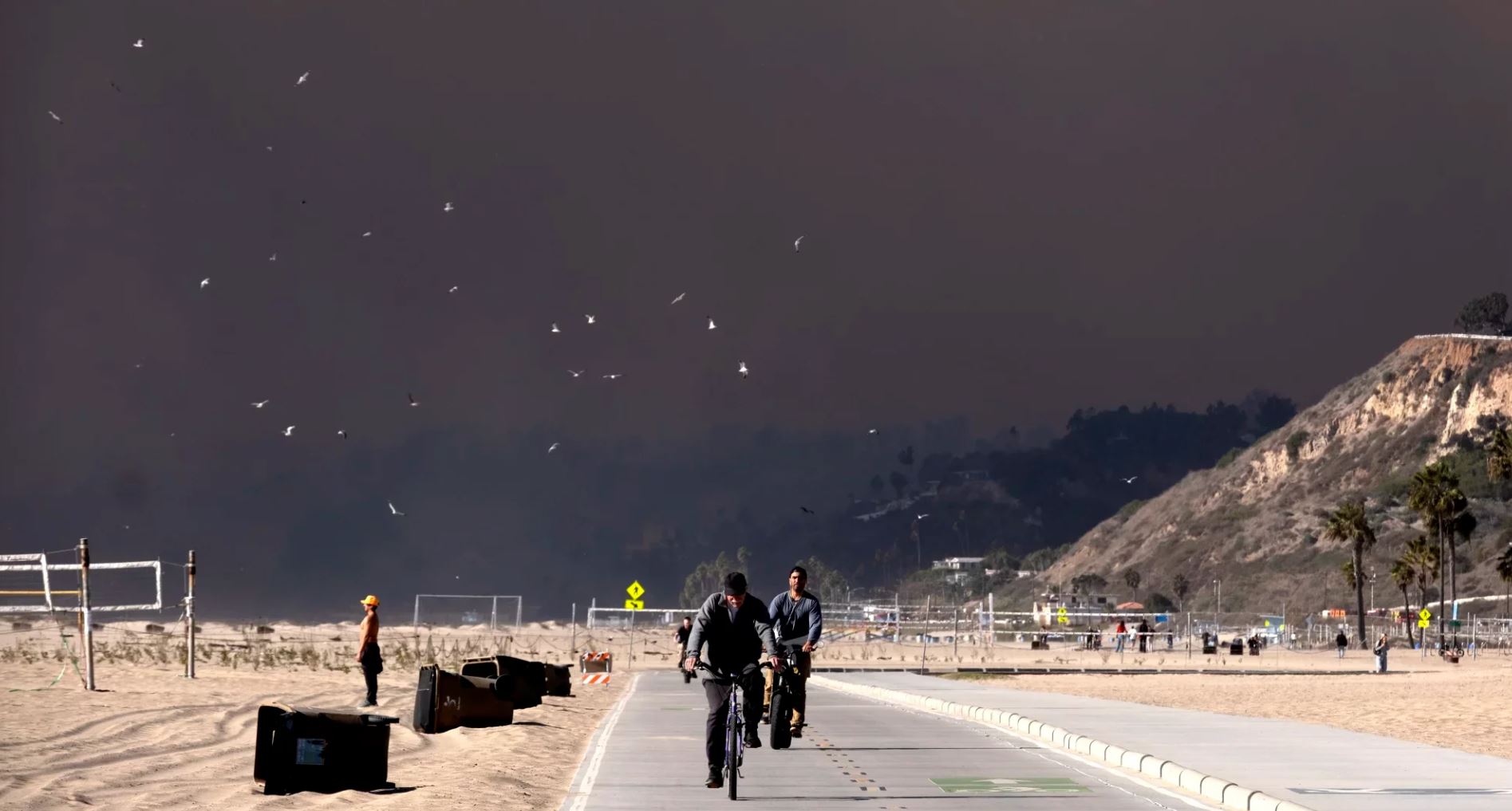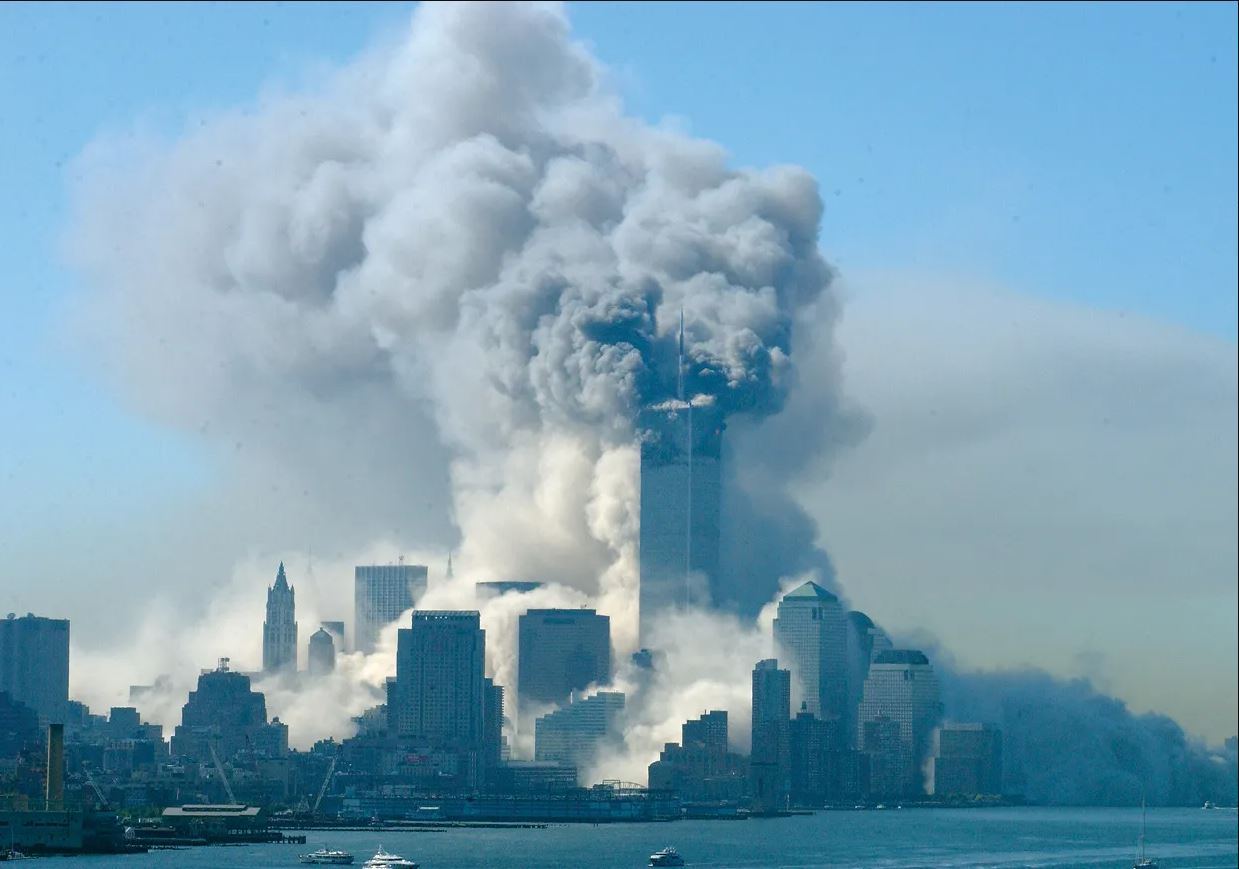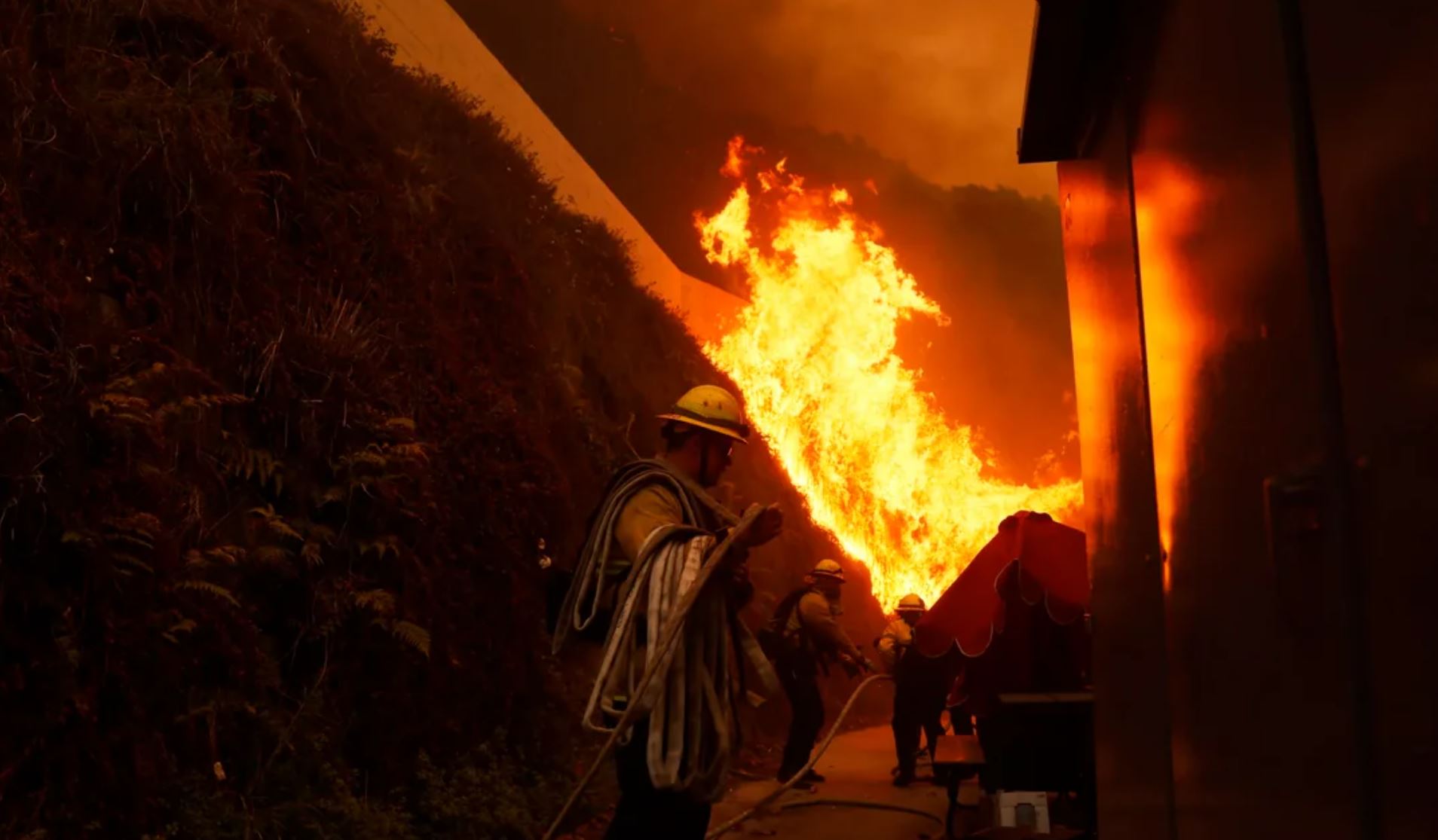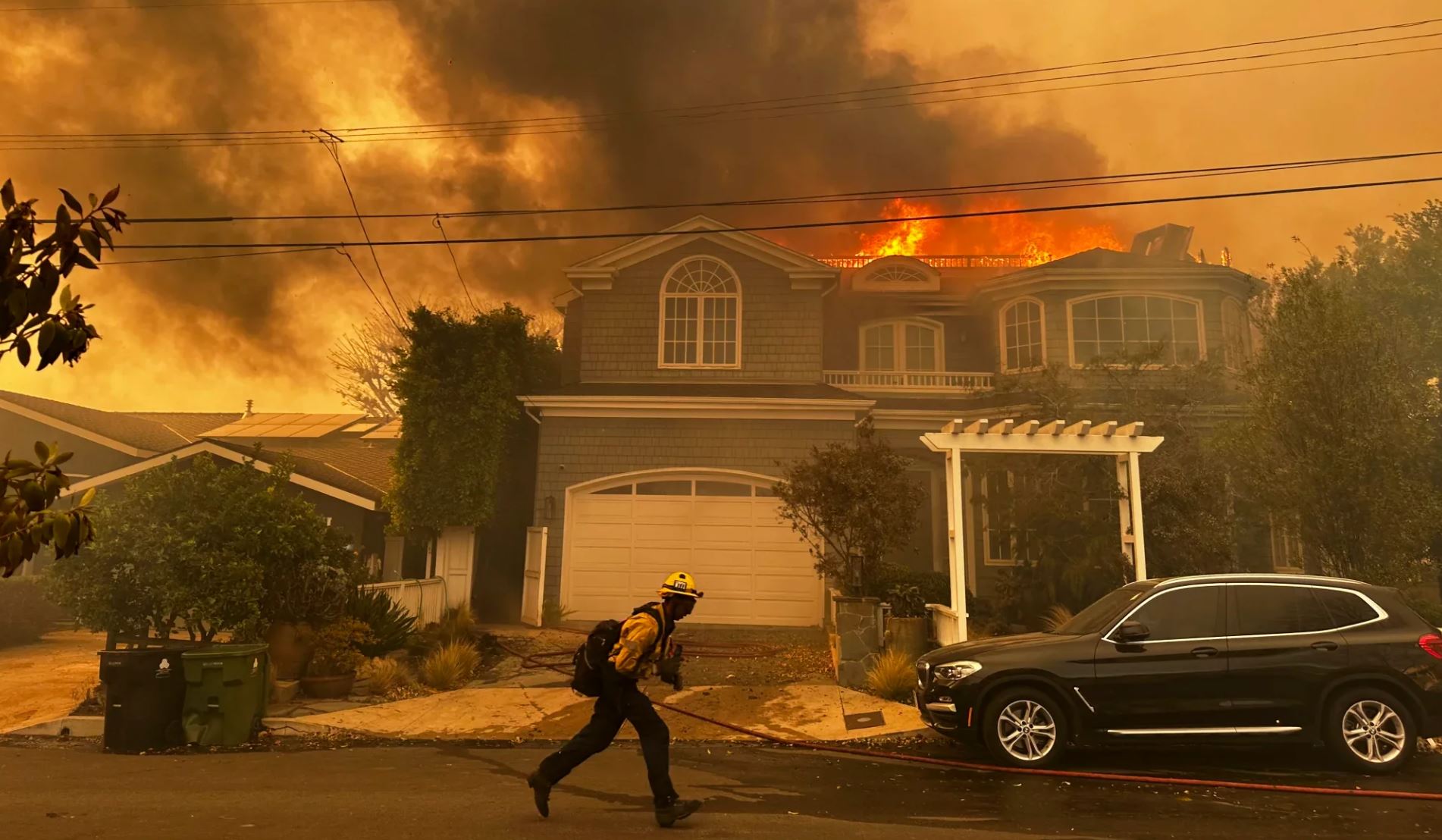The Hidden Dangers of Wildfire smoke: Lessons from 911
As Los Angeles continues to battle devastating wildfires, the challenges extend far beyond the visible flames. For countless residents and first responders, the air itself has become a silent threat. Smoke, laden with toxic chemicals and fine particulates, poses serious health risks that may linger long after the skies have cleared. The danger feels eerily reminiscent of what 9/11 survivors faced, where exposure to airborne toxins had long-term consequences on health and well-being.
In times like these, it’s crucial to acknowledge the unseen toll this crisis takes on those directly affected and offer clear, actionable steps to stay safe. Whether you're breathing in this hazardous air day after day or supporting loved ones who are, understanding the risks and how to mitigate them is key. In this article we will explore what’s happening, why it matters, and how we can navigate these challenges together.

Understanding the Composition of Wildfire Smoke
Wildfire smoke is far more than just an unpleasant haze; it’s a dangerous cocktail of gases and fine particles released when vegetation, man-made structures, and other materials are burned. For those exposed, understanding what’s in the air is crucial to assessing potential health risks.
Components of Concern:
-
Particulate Matter (PM2.5): These microscopic particles, smaller than 2.5 micrometers, are particularly dangerous because they can bypass the body’s natural defenses and penetrate deep into the lungs. From there, they can enter the bloodstream, increasing the risk of respiratory illnesses, heart disease, and other chronic health conditions. PM2.5 exposure is especially concerning for children, the elderly, and individuals with pre-existing health conditions.
-
Volatile Organic Compounds (VOCs): Organic chemicals, often released when plastics, paints, or treated wood are burned, VOCs can irritate the eyes, nose, and throat, trigger headaches, and, with prolonged exposure, cause damage to vital organs like the liver and kidneys. They’re also linked to developmental and neurological issues in extreme cases.
-
Carbon Monoxide (CO): A silent but deadly component of wildfire smoke, carbon monoxide is a colorless and odorless gas. Inhalation at high levels can reduce oxygen delivery in the body, leading to dizziness, fatigue, and even life-threatening conditions such as carbon monoxide poisoning. First responders and those near active fire zones are particularly at risk.
-
Polycyclic Aromatic Hydrocarbons (PAHs): These chemical compounds are released when organic materials burn incompletely. Known to be carcinogenic, PAHs pose risks of lung, bladder, and skin cancers. Long-term exposure, even at lower levels, can lead to significant health concerns, especially for those with repeated smoke exposure over time.

Hidden Dangers from Burned Homes:
When wildfires sweep through populated areas like Los Angeles, the dangers intensify. Homes, especially those built before modern safety regulations, often contain hazardous materials that release dangerous particles when burned. These include:
-
Asbestos: Widely used in construction until the late 20th century for its fireproofing properties, asbestos becomes highly dangerous when disturbed by fire. Microscopic asbestos fibers can become airborne, and inhaling these fibers has been linked to severe lung diseases such as asbestosis, lung cancer, and mesothelioma. The risk is particularly high in older homes built before asbestos was banned in many construction materials.
-
Lead: Found in older paints and pipes, lead particles released during fires can cause significant health problems, particularly in children, including developmental delays and neurological issues.
-
Treated Wood and Building Materials: Many homes contain chemically treated wood and synthetic materials that release toxic fumes, including dioxins and other harmful substances, when burned. These chemicals can cause respiratory issues and long-term health effects.
-
Mold Spores: Water used to extinguish fires can saturate surviving structures, creating ideal conditions for mold growth. Mold spores released into the air can cause respiratory problems, allergic reactions, and worsen asthma or other pre-existing conditions.
The combination of wildfire smoke and toxins released from burned structures creates a unique and particularly hazardous air quality problem. Even those far from the fire zone can be exposed to these harmful particles as smoke travels for miles. This underscores the importance of protective measures, including wearing N95 masks, monitoring air quality, and, when necessary, considering evacuation to safer areas. Awareness and proactive actions can help mitigate the risks and protect your health in the face of such compounded dangers.
Health Risks Associated with Wildfire Smoke
When wildfire smoke fills the air, the impacts go far beyond discomfort. The health risks, both immediate and long-term, can be profound, especially for those living or working near affected areas. Let’s take a closer look at how smoke exposure can affect you and your loved ones, and what symptoms to watch for.
In the short term, breathing in wildfire smoke often causes irritation—burning eyes, an itchy throat, and an unrelenting cough are common complaints. These symptoms might seem manageable at first, but for people with asthma, heart disease, or other pre-existing conditions, they can quickly escalate into something more serious. If you’ve ever found yourself feeling out of breath just walking to your car on a smoky day, you’ve experienced how quickly wildfire smoke can take its toll. Children and older adults are particularly vulnerable, as their bodies are less equipped to handle the stress of polluted air.
However, the effects of wildfire smoke don’t stop there. Prolonged or repeated exposure can cause chronic issues that may not surface for months or even years. Fine particles (PM2.5) found in smoke are small enough to enter your lungs and seep into your bloodstream, where they can wreak havoc on your respiratory and cardiovascular systems. Over time, this can lead to reduced lung function, chronic bronchitis, or even heart attacks and strokes. For those exposed repeatedly—such as first responders or residents of wildfire-prone areas—the risks can be even greater.
Then there’s the concern about carcinogens like polycyclic aromatic hydrocarbons (PAHs), which are present in the smoke from burning organic materials and man-made structures. These compounds are linked to higher risks of cancer, particularly lung cancer, in people who experience long-term exposure. For families living in areas hit by repeated wildfires, this is a sobering reality.
It’s worth noting that these risks don’t just apply to those directly in the path of the fires. Smoke can travel hundreds of miles, spreading its harmful particles far beyond the flames. If you’re noticing a persistent haze in your area, or if the air smells like smoke, you’re already at risk. Air quality monitors, like the ones provided by AirNow, can give you a clearer picture of the air you’re breathing and help you make informed decisions about staying indoors or using protective equipment.
The bottom line is this: wildfire smoke is not just an annoyance—it’s a serious health hazard. Whether you’re a parent worrying about your child playing outside, an older adult managing health conditions, or someone simply trying to go about your day, protecting your lungs and your overall health is essential. Let’s explore how you can do that effectively in the sections ahead.

Parallels to 9/11: Lessons Learned
The September 11 attacks in New York City remain a profound tragedy, not just for the lives lost on that day but for the ongoing health struggles faced by survivors, first responders, and residents. The collapse of the Twin Towers released a toxic cloud of debris that hung over Lower Manhattan, filled with substances like asbestos, lead, and other harmful materials. In the years since, countless individuals exposed to this toxic air have developed chronic respiratory conditions, cancers, and other life-altering health problems.
The parallels between the aftermath of 9/11 and the health risks posed by wildfire smoke are striking. Both disasters created airborne hazards that were invisible to the naked eye but devastating to those who breathed them in. Like the dust cloud in New York, wildfire smoke contains a complex mixture of fine particulate matter, volatile organic compounds, and carcinogens that can linger in the body long after the immediate danger has passed.
What we learned from 9/11 is that early intervention and long-term health monitoring are critical. Many first responders and survivors initially downplayed their symptoms, unaware of the serious illnesses that would emerge years later. By the time they sought medical care, the damage was often irreversible. This underscores the importance of taking symptoms seriously—whether it’s a persistent cough, difficulty breathing, or unusual fatigue—and seeking medical attention sooner rather than later.
Wildfire smoke presents a similar challenge: the long-term effects may not be immediately visible, but the risks are real. For those exposed, regular health check-ups and vigilance about changes in respiratory or cardiovascular health are essential. This is especially true for individuals in wildfire-prone areas, first responders, and anyone with pre-existing health conditions.
The 9/11 experience also highlights the importance of community and government action. Programs like the World Trade Center Health Program were created to support those affected by the toxic exposure in New York. Similarly, wildfire survivors and first responders need access to resources, healthcare, and long-term monitoring to ensure they’re not left to face these challenges alone.
By reflecting on the lessons of 9/11, we can better prepare for and respond to the health risks posed by wildfires. Awareness, early intervention, and collective support are key to mitigating the long-term impacts of these environmental disasters.

Protecting Yourself from Wildfire Smoke
When wildfires rage, protecting your health should be a top priority. The air filled with harmful particles can take a serious toll, especially if you're in the direct path of the smoke. Here are some key steps to minimize exposure, stay safe, and safeguard your well-being:
1. Stay Informed
Knowledge is power, especially during wildfire events. Regularly check local air quality reports and heed public health advisories. Resources like AirNow and local weather updates can provide real-time information about smoke conditions in your area. If air quality is labeled as “unhealthy” or worse, it’s time to take action.
2. Limit Outdoor Activities
If smoke levels are high, reduce the time you spend outdoors. For those with pre-existing conditions like asthma, COPD, or heart disease, this step is critical. Keep children and older adults indoors whenever possible, as they’re especially vulnerable to the effects of poor air quality.
3. Create a Clean Indoor Environment
Your home should be your refuge during smoky conditions:
- Keep Windows and Doors Closed: Use air conditioning if available, and set it to recirculate mode to prevent outdoor air from entering. If you don’t have AC and it's too hot to stay indoors, consider seeking shelter elsewhere.
- Invest in Air Purifiers: A high-efficiency particulate air (HEPA) filter can significantly improve indoor air quality by removing fine particles from the air. Place one in the room where your family spends the most time.
4. Use Masks Appropriately
If you must go outside, wear a properly fitted N95 respirator. These masks are designed to filter out fine particles like those in wildfire smoke. Be aware that standard cloth or surgical masks, while helpful for viruses, offer no protection against smoke. Ensure the mask fits snugly over your nose and mouth for the best protection.
5. Listen to Your Body and Seek Help
If you experience symptoms like difficulty breathing, chest pain, or extreme fatigue, don’t wait—seek medical attention immediately. These could be signs of a more serious reaction to smoke exposure.
6. Evacuate if Necessary
As hard as it is to leave behind the life you’ve built, sometimes the best choice for your health and safety is to get out of town. Smoke exposure is cumulative, and prolonged time in hazardous air can lead to lasting damage. While your home holds memories and meaning, remember that it’s ultimately replaceable. You, your loved ones, and your health are irreplaceable.
If you’re struggling to make the decision to leave, know that you’re not alone. It’s a painful and emotional choice, but it’s also a courageous one. Lean on your community and resources for support, and consider staying with friends, family, or in a nearby area with better air quality. Temporary housing options, like those offered by Airbnb.org, can also help bridge the gap as you find your footing.

Emergency Resources
Federal Relief Now Available for Los Angeles Wildfire Victims
In light of the devastating wildfires, President Biden has declared a Major Disaster for the affected areas in Los Angeles, unlocking immediate and long-term federal relief for residents and businesses in evacuation zones. This declaration provides critical resources to help individuals recover and rebuild.
If you’ve been impacted, here’s how you can access federal assistance:
- Visit: disasterassistance.gov to apply for disaster relief.
- Call: 800-621-FEMA (3362) for direct support and guidance.
- Contact Local Services: FEMA often partners with local organizations to provide additional support tailored to your community’s needs.
Airbnb.org Offers Free Housing for Wildfire Evacuees
To support those displaced by the wildfires, Airbnb.org is working with local organizations to provide free, temporary housing for evacuees. This initiative, funded by Airbnb.org and the generosity of participating hosts, ensures that those affected have a safe place to stay during this challenging time.
How It Works
Airbnb.org collaborates with organizations like 211 LA to identify those in need of temporary housing and connect them to available stays. Residents in areas such as Malibu, Santa Monica, Pasadena, and Pacific Palisades can request assistance.
How to Request Assistance
- Visit 211 LA for more information.
- Complete the Airbnb.org Intake Form to apply for temporary housing.
How to Help
- If you’re an Airbnb host, you can offer free or discounted stays through Airbnb.org. Visit Airbnb.org to learn how to participate.
- Donations to Airbnb.org directly fund emergency housing for wildfire evacuees.
Support and Resources for a Brighter Tomorrow
The road to recovery after a disaster is never easy, but with federal assistance, community support, and resources like temporary housing through Airbnb.org, we can help those affected rebuild stronger than before. As Los Angeles begins the long process of recovery, let’s continue to stand together, offering empathy, aid, and hope to those who need it most.
Subscribe to my newsletter below to stay updated on wildfire recovery efforts, and if you’ve been displaced by the fires, I encourage you to share your photos and story. Together, we can amplify your voice and connect you with resources to help you rebuild.
Photo credit iboughtarock from reddit
